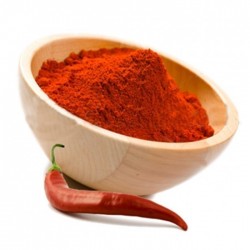Menu
-
MenuInapoi
- Home
-
Categorii
-
-
Categorii
-
Semințe de legume
-
Soiuri după țară
- Soiuri din Armenia
- Soiuri din BiH
- Soiuri din Croația
- Soiuri din Franța
- Varieties from Germany
- Varieties from Greece
- Varieties from Hungary
- Soiuri din India
- Varieties from Italy
- Soiuri din Japonia
- Soiuri din Macedonia de Nord
- Varieties from Peru
- Varieties from Russia
- Varieties from Serbia
- Soiuri din Slovenia
- Varieties from Spain
- Varieties from Thailand
- Soiuri din Turcia
- Varieties from USA
- Semințe de roșii
- Semințe de porumb
- Familia Dovleac
- Familia Bean
- Semințe de castraveți
- Seminte de ardei gras
- Familia morcovului
- Familia ceapa
- Semințe de salată verde
- Familia cartofilor
- Familia de varză
- Semințe de ridiche
- Familia sfeclei
- Semințe de pepene verde
- Semințe de pepene galben
- Semințe de conopidă
- Familia de floarea soarelui
-
Soiuri după țară
- Semințe de fructe
- Seminte de Chili Peppers
- Semințe de plante medicinale
- Semințe de plante cățărătoare
- Copaci - Arbust - Semințe
- Semințe de palmier
- Semințe de ierburi ornamentale
- Semințe de tutun
-
Semințe de legume
-
-
-
-
- PRODUSE NOI
- Crează un cont
- Livrare - Plata
- FAQ
Last Product Reviews
Out of the two seeds, one germinated and the other one was dead and floatin...
By
 Riikka H on 07/03/2024
Riikka H on 07/03/2024
Verified Purchase
Sunt 94 produse.
Se afiseaza 46-60 din 94 produs(e)

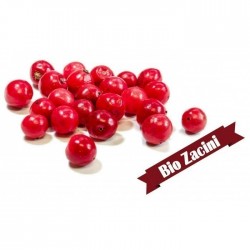
Red peppercorns - spice
Pret
3,50 €
(SKU: Z 52)
Seeds Gallery EU,
5/
5
<h2><span style="font-size:14pt;"><strong>Red peppercorns - spice</strong></span><br /><span style="font-size:14pt;color:#ff0000;"><strong>The price is for package of 10 grams of this spice.</strong></span></h2>
<p><span style="font-size:11pt;color:#000000;">Red pepper has a keen but also sweet, aromatic taste. The full aroma develops only when the granules are milled. We recommend it with fish and chicken. It gives flavor to various delicate sauces served with lobster, lamb medallions and pork. It is also often used for desserts and as an addition to chocolate. Red pepper is not a substitute for pepper and should be dosed in small quantities. It is well combined with fennel, lemon grass, mint, parsley, black and green pepper.</span></p>
Z 52


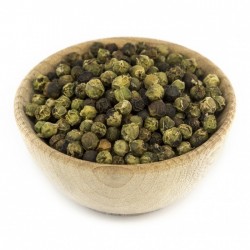
Green peppercorns - spice
Pret
3,50 €
(SKU: Z 69)
Seeds Gallery EU,
5/
5
<h2><span style="font-size:14pt;"><strong>Green peppercorns - spice</strong></span><br /><span style="font-size:14pt;color:#ff0000;"><strong>The price is for package of 10 grams of this spice.</strong></span></h2>
<p>Green peppercorns, like black and white, are certainly the most popular spices today, which are very enjoyable in cooking and have a long tradition of almost a thousand years. Pepper spice was so valuable in the past that it was used by ancient merchants for payment instead of money. Their color depends on the time of harvest. In medicine, pepper is recommended because it works beneficially for the following conditions and disorders: fever, dizziness, reume...</p>
<p>Green pepper for slimming</p>
<p>Recent research has proven that green pepper helps for getting a thin waist. Excretion of gastric juices and enzymes accelerates digestion of food. However, the most important is the secretion of hydrochloric acid in the stomach, which disintegrates the fat. Green pepper is the strongest of all the others, because it contains a lot of essential oils that successfully dilute deep fat, making it an increasingly common ingredient for removing cellulite. Important note: the most important thing is that the pepper is minced manually immediately before each use, in order to reach the desired efect. Pay attention when you are buying it, you should always choose heavier and bigger peppercorns.</p>
Z 69


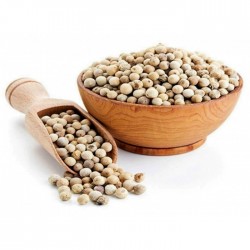
White peppercorns - spice
Pret
3,50 €
(SKU: Z 68)
Seeds Gallery EU,
5/
5
<h2><span style="font-size:14pt;"><strong>White peppercorns - spice</strong></span><br /><span style="font-size:14pt;color:#ff0000;"><strong>The price is for package of 10 grams of this spice.</strong></span></h2>
<p>Pepper is the fruit of the plant, which originates from the Indian archipelago, and today it is cultivated throughout tropical Asia, equatorial America and Africa. From the same plant, black and white pepper is obtained. White pepper is obtained by picking almost mature red berries and holding 3-4 days in the water for swelling and easier peeling and then dries. The aroma comes from essential oils (about 1.5%). Black pepper is spicier than white.</p>
<p>Pepper - medicinal uses</p>
<p>Food with plenty of pepper is not only tastier and strengthen appetite, but it is protective against infections in digestive organs and serve as a natural remedy against some disorders and diseases of the respiratory system. It has been scientifically proven that those who eat very spicy food rarely have bronchitis and asthma. Tomato juice with pepper is especially useful.</p>
Z 68


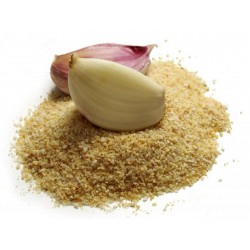
Garlic granules - spice
Pret
2,25 €
(SKU: Z 70)
Seeds Gallery EU,
5/
5
<h2><span style="font-size:14pt;"><strong>Garlic granules - spice</strong></span><br /><span style="font-size:14pt;color:#ff0000;"><strong>The price is for packing of 10 grams of this spice.</strong></span></h2>
<p>A natural antibiotic, with over 600 active substances, has a number of health effects. It is working against bacteria, fungi, parasites, reduces fats in blood, lowers blood pressure ... This is a spice that has been found in many kitchens, especially in the Balkans. It is used for seasoning dishes: soups, roasted meat, sauces (containing essential oils), appetizers, salad, but also as an addition to dried meat products.</p>
<p>Garlic is a herbaceous plant from twenty to forty centimeters, with a spice of strong smell and hot flavor. The leaves are elongated, flat, narrow, leathery and end up with a spike. Everyone is involved in the creation of a membrane skirt. The flowers are white or pink on the long arms, grouped in a simple terminal shield, which opens before flowering.</p>
Z 70


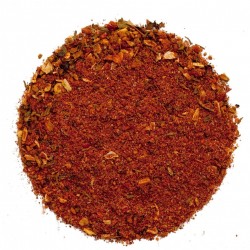
Argentine spice for BBQ
Pret
2,75 €
(SKU: Z 46)
Seeds Gallery EU,
5/
5
<h2><span style="font-size:14pt;"><strong>Argentine spice for BBQ</strong></span><br /><span style="font-size:14pt;color:#ff0000;"><strong>The price is for packaging of 10 grams of this spice.</strong></span></h2>
<p><span style="font-size:11pt;color:#000000;">This is the most popular spice for barbecue in Argentina that is not only used at home but is also popular in elite restaurants. This spice contains following ingredients: seeds of mustard, thyme, black pepper, coriander, onion, yeast extract.<br />Not recomended for children under the age of 3.</span></p>
Z 46

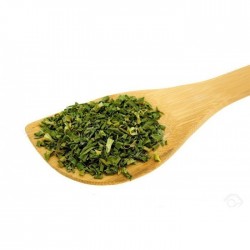
Chinese chives garlic spice...
Pret
1,70 €
(SKU: Z 48)
Seeds Gallery EU,
5/
5
<h2><span style="font-size:14pt;"><strong>Chinese chives garlic spice - dried and chopped</strong></span><br /><span style="font-size:14pt;color:#ff0000;"><strong>The price is for packaging of 10 grams of this spice.</strong></span></h2>
<p><span style="font-size:11pt;color:#000000;">Chives is a member of the family of arches, which includes garlic, onion and leek. Some of the most important health benefits of chives include its ability to improve heart health, improve bone strength, protect against a wide range of tumors, facilitate digestion, improve vision, protect against congenital defects and strengthen the immune system. The stems of chives are long and hollow, which is an edible part of the plant. These hollow stems are usually chopped and added as spice to many dishes: fish, soups, sauces, salads, Mexican dishes, potato dishes and a wide range of other dishes.</span></p>
Z 48

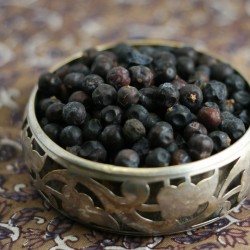
Ienupărul - fructe de...
Pret
1,70 €
(SKU: Z 50)
Seeds Gallery EU,
5/
5
<!DOCTYPE html>
<html>
<head>
<meta http-equiv="Content-Type" content="text/html; charset=UTF-8" />
</head>
<body>
<h2><strong>Ienupărul - fructe de padure intregi (Juniperus communis)</strong></h2>
<h2><span style="color: #ff0000;"><strong>Prețul este pentru ambalajul a 20 de grame.</strong></span></h2>
<p>În fiecare an primim fructe de pădure din Herțegovina din zona satului <strong>Duzi</strong>, unde localnicii le culeg cu mâna în sălbăticie și în partea în care nu există industrie și alți poluanți în apropiere.</p>
<p>Boabele de ienupăr au inițial un gust dulce, iar mai târziu fierbinți. La gătit se folosesc fructe de padure uscate sau proaspete. Boabele sunt mari ca mazărea și cărnoase. Ienupărul acționează împotriva bacteriilor și este un bun antiseptic. Calmează tusea și curăță sângele. Ienupărul este un condiment important în multe țări europene, în special în regiunea alpină și Scandinavia. În Germania, ienupărul se adaugă la murarea varzei. În Scandinavia, berea este aromată cu ea.</p>
<h3><strong>Culinar</strong></h3>
<p>Conurile sale astringente de semințe albastre-negre, cunoscute în mod obișnuit ca „fructe de ienupăr”, sunt prea amare pentru a le consuma crude și sunt de obicei vândute uscate și utilizate pentru aromatizarea cărnii, sosurilor și umpluturilor. În general, acestea sunt zdrobite înainte de utilizare pentru a-și elibera aroma. Deoarece fructele de ienupăr au un gust puternic, acestea ar trebui folosite cu cumpătare. În general, acestea sunt folosite pentru a spori carnea cu o aromă puternică, cum ar fi un vânat, inclusiv păsări de vânat sau limbă.</p>
<p>Conurile sunt folosite pentru aromatizarea anumitor beri și gin (cuvântul „gin” derivă dintr-un cuvânt francez vechi care înseamnă „ienupăr”). În Finlanda, ienupărul este folosit ca ingredient cheie în prepararea sahti, o bere tradițională finlandeză. De asemenea, băutura alcoolică slovacă Borovička și olandezul Jenever sunt aromate cu boabe de ienupăr sau cu extractul său.</p>
<p>Ienupărul este folosit în berile tradiționale din Norvegia. Suedia, Finlanda, Estonia și Letonia. În Norvegia, berea se prepară cu infuzie de ienupăr în loc de apă, în timp ce în celelalte țări crenguțele de ienupăr sunt utilizate în principal în piure, ca filtre pentru a împiedica înfundarea malțelor zdrobite la ieșirea tunului. Utilizarea ienupărului în fabricarea berii la fermă a fost obișnuită în mare parte din nordul Europei, aparent de foarte mult timp.</p>
<h3><strong>Medicină tradițională</strong></h3>
<p>Fructele de ienupăr au fost folosite de mult timp ca medicamente de multe culturi, inclusiv poporul Navajo. Triburile din America de Vest au combinat boabele Juniperus communis cu coaja de rădăcină Berberis într-un ceai de plante. Americanii nativi au folosit, de asemenea, fructe de ienupăr ca contraceptiv feminin.</p>
</body>
</html>
Z 50 20-G


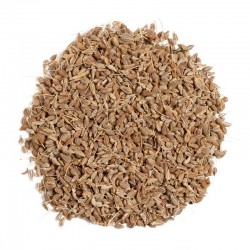
Anise spice
Pret
3,00 €
(SKU: Z 53)
Seeds Gallery EU,
5/
5
<h2><span style="font-size:14pt;"><strong>Anise spice</strong></span><br /><span style="font-size:14pt;color:#ff0000;"><strong>The price is for package of 2 grams of this spice.</strong></span></h2>
<div>Anise has finely cut, feathery leaves topped with long stems of white umbel flowers. The licorice flavoured seeds are added to breads, cakes and desserts, or made into a tea that is used medicinally for asthma and bronchitis. Once the plant is established the young leaves can be used as an addition to soups and salads. </div>
<div>Pimpinella anisum is an annual member of the parsley family, and it shouldn't be confused with the Chinese spice, star anise, which grows on a tree. Pimpinella anisum seeds are small and grey-brown. In India, ground aniseed is added to curry powder, and the whole seeds are chewed to freshen the breath after meals. </div>
<table cellspacing="0" cellpadding="0" border="1"><tbody><tr><td colspan="2" width="100%" valign="top">
<p><span style="color:#008000;"><strong>Sowing Instructions</strong></span></p>
</td>
</tr><tr><td valign="top" nowrap="nowrap">
<p><span style="color:#008000;"><strong>Propagation:</strong></span></p>
</td>
<td valign="top">
<p><span style="color:#008000;">Seeds</span></p>
</td>
</tr><tr><td valign="top" nowrap="nowrap">
<p><span style="color:#008000;"><strong>Pretreat:</strong></span></p>
</td>
<td valign="top">
<p><span style="color:#008000;">0</span></p>
</td>
</tr><tr><td valign="top" nowrap="nowrap">
<p><span style="color:#008000;"><strong>Stratification:</strong></span></p>
</td>
<td valign="top">
<p><span style="color:#008000;">0</span></p>
</td>
</tr><tr><td valign="top" nowrap="nowrap">
<p><span style="color:#008000;"><strong>Sowing Time:</strong></span></p>
</td>
<td valign="top">
<p><span style="color:#008000;">all year round </span></p>
</td>
</tr><tr><td valign="top" nowrap="nowrap">
<p><span style="color:#008000;"><strong>Sowing Depth:</strong></span></p>
</td>
<td valign="top">
<p><span style="color:#008000;">Cover lightly with substrate</span></p>
</td>
</tr><tr><td valign="top" nowrap="nowrap">
<p><span style="color:#008000;"><strong>Sowing Mix:</strong></span></p>
</td>
<td valign="top">
<p><span style="color:#008000;">Coir or sowing mix + sand or perlite</span></p>
</td>
</tr><tr><td valign="top" nowrap="nowrap">
<p><span style="color:#008000;"><strong>Germination temperature:</strong></span></p>
</td>
<td valign="top">
<p><span style="color:#008000;">18-20 ° C</span></p>
</td>
</tr><tr><td valign="top" nowrap="nowrap">
<p><span style="color:#008000;"><strong>Location:</strong></span></p>
</td>
<td valign="top">
<p><span style="color:#008000;">bright + keep constantly moist not wet</span></p>
</td>
</tr><tr><td valign="top" nowrap="nowrap">
<p><span style="color:#008000;"><strong>Germination Time:</strong></span></p>
</td>
<td valign="top">
<p><span style="color:#008000;">until it germinates </span></p>
</td>
</tr><tr><td valign="top" nowrap="nowrap">
<p><span style="color:#008000;"><strong>Watering:</strong></span></p>
</td>
<td valign="top">
<p><span style="color:#008000;">Water regularly during the growing season</span></p>
</td>
</tr><tr><td valign="top" nowrap="nowrap">
<p><span style="color:#008000;"><strong> </strong></span></p>
</td>
<td valign="top">
<p><br /><span style="color:#008000;"><em>Copyright © 2012 Seeds Gallery - Saatgut Galerie - Galerija semena. </em><em>All Rights Reserved.</em><em></em></span></p>
<div></div>
</td>
</tr></tbody></table>
Z 53

- La reducere!

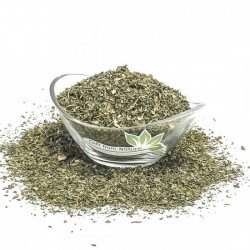
Celeriac spice
Pret
3,50 €
(SKU: Z 55)
Seeds Gallery EU,
5/
5
<h2><span style="font-size:14pt;"><strong>Celeriac spice</strong></span><br /><span style="font-size:14pt;color:#ff0000;"><strong>The price is for package of 5 grams of this spice.</strong></span></h2>
<div>Well shaped smooth celeriac, vigorous roots, upright foliage. Round, relatively smooth skin with good inner quality. Suited to fresh market and storage.</div>
<div>Sowing Instructions</div>
<div>Site & Soil</div>
<div>Celeriac has been bred from wild celery which originates from Northern Europe. They grow best in a soil which has been fertilised the previous season and not the current season. Too much nitrogen in the soil from manure etc. will encourage leaf growth rather then growth of the bulbous root. </div>
<div>The best soil is one which retains moisture but is also free-draining. Although those are the ideal conditions celeriac is very tolerant of soil conditions and will grow well on most sites. </div>
<div>They prefer a site which is in full sun but will tolerate part-shade very well.</div>
<div>When to Sow</div>
<div>In cooler areas, sow indoors or in a greenhouse / cold frame. Sow two seeds to a small pot (7.5cm / 3in) in early March.</div>
<div>
<table cellspacing="0" cellpadding="0" border="1"><tbody><tr><td colspan="2" width="100%" valign="top">
<p><span style="color:#008000;"><strong>Sowing Instructions</strong></span></p>
</td>
</tr><tr><td valign="top" nowrap="nowrap">
<p><span style="color:#008000;"><strong>Propagation:</strong></span></p>
</td>
<td valign="top">
<p><span style="color:#008000;">Seeds</span></p>
</td>
</tr><tr><td valign="top" nowrap="nowrap">
<p><span style="color:#008000;"><strong>Pretreat:</strong></span></p>
</td>
<td valign="top">
<p><span style="color:#008000;">0</span></p>
</td>
</tr><tr><td valign="top" nowrap="nowrap">
<p><span style="color:#008000;"><strong>Stratification:</strong></span></p>
</td>
<td valign="top">
<p><span style="color:#008000;">0</span></p>
</td>
</tr><tr><td valign="top" nowrap="nowrap">
<p><span style="color:#008000;"><strong>Sowing Time:</strong></span></p>
</td>
<td valign="top">
<p><span style="color:#008000;">all year round </span></p>
</td>
</tr><tr><td valign="top" nowrap="nowrap">
<p><span style="color:#008000;"><strong>Sowing Depth:</strong></span></p>
</td>
<td valign="top">
<p><span style="color:#008000;">Needs Light to germinate! Just sprinkle on the surface of the substrate + gently press</span></p>
</td>
</tr><tr><td valign="top" nowrap="nowrap">
<p><span style="color:#008000;"><strong>Sowing Mix:</strong></span></p>
</td>
<td valign="top">
<p><span style="color:#008000;">Coir or sowing mix + sand or perlite</span></p>
</td>
</tr><tr><td valign="top" nowrap="nowrap">
<p><span style="color:#008000;"><strong>Germination temperature:</strong></span></p>
</td>
<td valign="top">
<p><span style="color:#008000;">18 - 20°C</span></p>
</td>
</tr><tr><td valign="top" nowrap="nowrap">
<p><span style="color:#008000;"><strong>Location:</strong></span></p>
</td>
<td valign="top">
<p><span style="color:#008000;">bright + keep constantly moist not wet</span></p>
</td>
</tr><tr><td valign="top" nowrap="nowrap">
<p><span style="color:#008000;"><strong>Germination Time:</strong></span></p>
</td>
<td valign="top">
<p><span style="color:#008000;">12°C: 32 Days</span><br /><span style="color:#008000;">20°C: 15 days</span></p>
</td>
</tr><tr><td valign="top" nowrap="nowrap">
<p><span style="color:#008000;"><strong>Watering:</strong></span></p>
</td>
<td valign="top">
<p><span style="color:#008000;">Water regularly during the growing season</span></p>
</td>
</tr><tr><td valign="top" nowrap="nowrap">
<p><span style="color:#008000;"><strong> </strong></span></p>
</td>
<td valign="top">
<p><br /><span style="color:#008000;"><em>Copyright © 2012 Seeds Gallery - Saatgut Galerie - Galerija semena. </em><em>All Rights Reserved.</em><em></em></span></p>
</td>
</tr></tbody></table></div>
Z 55


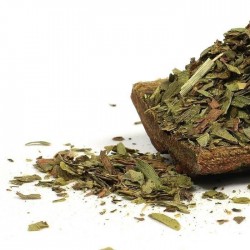
Tarragon spice
Pret
2,50 €
(SKU: Z 57)
Seeds Gallery EU,
5/
5
<h2><span style="font-size:14pt;"><strong>Tarragon spice</strong></span><br /><span style="font-size:14pt;color:#ff0000;"><strong>The price is for package of 5 grams of this spice.</strong></span></h2>
<p>Tarragon (Artemisia dracunculus) is a species of perennial herb in the family Asteraceae. One sub-species, Artemisia dracunculus var. sativa, is cultivated for use of the leaves as an aromatic culinary herb. In some other sub-species, the characteristic aroma is largely absent.</p>
Z 57


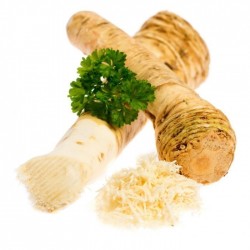
Horseradish spice...
Pret
3,95 €
(SKU: Z 59)
Seeds Gallery EU,
5/
5
<h2><span style="font-size:14pt;"><strong>Horseradish spice (Armoracia rusticana)</strong></span><br /><span style="font-size:14pt;color:#ff0000;"><strong>The price is for package of 5 grams of this spice.</strong></span></h2>
<p><span>Horseradish (Armoracia rusticana, syn. Cochlearia armoracia) is a perennial plant of the Brassicaceae family (which also includes mustard, wasabi, broccoli, and cabbage). It is a root vegetable used as a spice.</span></p>
<p><span>The plant is probably native to southeastern Europe and western Asia. It is popular worldwide. It grows up to 1.5 meters (4.9 feet) tall, and is cultivated primarily for its large, white, tapered root. </span></p>
<p><span>The intact horseradish root has hardly any aroma. When cut or grated enzymes from the now-broken plant cells break down sinigrin (a glucosinolate) to produce allyl isothiocyanate (mustard oil), which irritates the mucous membranes of the sinuses and eyes. Grated mash should be used immediately or preserved in vinegar for best flavor. Once exposed to air or heat it will begin to lose its pungency, darken in color, and become unpleasantly bitter tasting over time.</span></p>
<p><strong><span>History</span></strong></p>
<p><span>Horseradish is probably indigenous to temperate Eastern Europe, where its Slavic name chren seemed to Augustin Pyramus de Candolle more primitive than any Western synonym. Horseradish has been cultivated since antiquity.[6] According to Greek mythology, the Delphic Oracle told Apollo that the horseradish was worth its weight in gold. Dioscorides listed horseradish equally as Persicon sinapi (Diosc. 2.186) or Sinapi persicum (Diosc. 2.168),[8] which Pliny's Natural History reported as Persicon napy;[9] Cato discusses the plant in his treatises on agriculture, and a mural in Pompeii shows the plant. Horseradish is probably the plant mentioned by Pliny the Elder in his Natural History under the name of Amoracia, and recommended by him for its medicinal qualities, and possibly the wild radish, or raphanos agrios of the Greeks. The early Renaissance herbalists Pietro Andrea Mattioli and John Gerard showed it under Raphanus.[10] Its modern Linnaean genus Armoracia was first applied to it by Heinrich Bernhard Ruppius, in his Flora Jenensis, 1745, but Linnaeus himself called it Coclearia armoracia.</span></p>
<p><span>Both root and leaves were used as a medicine during the Middle Ages. The root was used as a condiment on meats in Germany, Scandinavia, and Britain. It was introduced to North America during European colonialization;[11] both George Washington and Thomas Jefferson mention horseradish in garden accounts.</span></p>
<p><span>William Turner mentions horseradish as Red Cole in his "Herbal" (1551–1568), but not as a condiment. In The Herball, or Generall Historie of Plantes (1597), John Gerard describes it under the name of raphanus rusticanus, stating that it occurs wild in several parts of England. After referring to its medicinal uses, he says:</span></p>
<p><span>The Horse Radish stamped with a little vinegar put thereto, is commonly used among the Germans for sauce to eat fish with and such like meats as we do mustard.</span></p>
<p><span>The word horseradish is attested in English from the 1590s. It combines the word horse (formerly used in a figurative sense to mean strong or coarse) and the word radish.</span></p>
<p><strong><span>Cultivation</span></strong></p>
<p><span>Horseradish is perennial in hardiness zones 2–9 and can be grown as an annual in other zones, although not as successfully as in zones with both a long growing season and winter temperatures cold enough to ensure plant dormancy. After the first frost in autumn kills the leaves, the root is dug and divided. The main root is harvested and one or more large offshoots of the main root are replanted to produce next year's crop. Horseradish left undisturbed in the garden spreads via underground shoots and can become invasive. Older roots left in the ground become woody, after which they are no longer culinarily useful, although older plants can be dug and re-divided to start new plants.[11][15] The early season leaves can be distinctively different, asymmetric spiky, before the mature typical flat broad leaves start to be developed.</span></p>
<p><strong><span>Culinary uses</span></strong></p>
<p><span>The distinctive pungent taste of horseradish is from the compound allyl isothiocyanate. Upon crushing the flesh of horseradish, the enzyme myrosinase is released and acts on the glucosinolates sinigrin and gluconasturtiin, which are precursors to the allyl isothiocyanate. The allyl isothiocyanate serves the plant as a natural defense against herbivores. Since allyl isothiocyanate is harmful to the plant itself, it is stored in the harmless form of the glucosinolate, separate from the myrosinase enzyme. When an animal chews the plant, the allyl isothiocyanate is released, repelling the animal. Allyl isothiocyanate is an unstable compound, degrading over the course of days at 37 °C (99 °F). Because of this instability, horseradish sauces lack the pungency of the freshly crushed roots.</span></p>
<p><span>Cooks use the terms "horseradish" or "prepared horseradish" to refer to the grated root of the horseradish plant mixed with vinegar. Prepared horseradish is white to creamy-beige in color. It can be stored for months under refrigeration, but eventually will darken, indicating it is losing flavour and should be replaced. The leaves of the plant, while edible, are not commonly eaten, and are referred to as "horseradish greens", which have a flavor similar to that of the roots.</span></p>
<p><strong><span>Horseradish sauce</span></strong></p>
<p><span>Horseradish sauce made from grated horseradish root and vinegar is a popular condiment in the United Kingdom and in Poland.[19] In the UK, it is usually served with roast beef, often as part of a traditional Sunday roast; but can be used in a number of other dishes also, including sandwiches or salads. A variation of horseradish sauce, which in some cases may substitute the vinegar with other products like lemon juice or citric acid, is known in Germany as Tafelmeerrettich. Also popular in the UK is Tewkesbury mustard, a blend of mustard and grated horseradish originating in medieval times and mentioned by Shakespeare (Falstaff says: "his wit's as thick as Tewkesbury Mustard" in Henry IV Part II[20]). A very similar mustard, called Krensenf or Meerrettichsenf, is popular in Austria and parts of Eastern Germany.[citation needed] In France, sauce au raifort is popular in Alsatian cuisine.[citation needed] In Russia horseradish root is usually mixed with grated garlic and small amount of tomatoes for color.</span></p>
<p><span>In the US the term "horseradish sauce" refers to grated horseradish combined with mayonnaise or salad dressing. Prepared horseradish is a common ingredient in Bloody Mary cocktails and in cocktail sauce, and is used as a sauce or sandwich spread. Horseradish cream is a mixture of horseradish and sour cream and is served alongside au jus for a prime rib dinner.</span></p>
<p><strong><span>Vegetable</span></strong></p>
<p><span>In Central and Eastern Europe horseradish is called khren (in various spellings like kren) in many Slavic languages, in Austria, in parts of Germany (where the other German name Meerrettich isn't used), in North-East Italy, and in Yiddish (</span><span>כריין</span><span> transliterated as khreyn).</span></p>
<p><span>There are two varieties of khreyn. "Red" khreyn is mixed with red beetroot and "white" khreyn contains no beetroot. It is popular in Ukraine (under the name of хрін, khrin), in Belarus (under the name of хрэн, chren), in Poland (under the name of chrzan), in the Czech Republic (křen), in Russia (хрен, khren), in Hungary (torma), in Romania (hrean), in Lithuania (krienai), in Bulgaria (хрян, khryan), and in Slovakia (under the name of chren). Having this on the table is a part of Christian Easter and Jewish Passover tradition in Eastern and Central Europe.</span></p>
<p><span>In parts of Southern Germany like Franconia, "Kren" is an essential component of the traditional wedding dinner. It is served with cooked beef and a dip made from lingonberry to balance the slight hotness of the Kren.</span></p>
<p><span>In Poland, a variety with red beetroot is called ćwikła z chrzanem or simply ćwikła.</span></p>
<p><span>In Ashkenazi European Jewish cooking beetroot horseradish is commonly served with gefilte fish.</span></p>
<p><span>In Transylvania and other Romanian regions, Red beetroot with horseradish is also used as a salad served with lamb dishes at Easter called sfecla cu hrean.</span></p>
<p><span>In Serbia, ren is an essential condiment with cooked meat and freshly roasted suckling pig.</span></p>
<p><span>In Croatia, freshly grated horseradish (Croatian: Hren) is often eaten with boiled ham or beef.</span></p>
<p><span>In Slovenia, and in the adjacent Italian regions of Friuli Venezia Giulia and nearby Italian region of Veneto, horseradish (often grated and mixed with sour cream, vinegar, hard-boiled eggs, or apples) is also a traditional Easter dish.</span></p>
<p><span>Further west in the Italian regions of Lombardy, Emilia-Romagna, and Piedmont, it is called "barbaforte (strong beard)" and is a traditional accompaniment to bollito misto; while in north-eastern regions like Trentino-Alto Adige/Südtirol, Veneto and Friuli-Venezia Giulia, it is still called "kren" or "cren". In the southern region of Basilicata it is known as "rafano" and used for the preparation of the so-called "rafanata", a main course made of horseradish, eggs, cheese and sausage.</span></p>
<p><span>Horseradish is also used as a main ingredient for soups. In the Polish region of Silesia, horseradish soup is a common Easter Day dish.</span></p>
<p><strong><span>Relation to wasabi</span></strong></p>
<p><span>The Japanese condiment wasabi, although traditionally prepared from the wasabi plant, is now usually made with horseradish due to the scarcity of the wasabi plant.[27] The Japanese botanical name for horseradish is seiyōwasabi (</span><span>セイヨウワサビ</span><span>, </span><span>西洋山葵</span><span>), or "Western wasabi". Both plants are members of the family Brassicaceae.</span></p>
<p><strong><span>Nutritional content</span></strong></p>
<p><span>In a 100 gram amount, prepared horseradish provides 48 calories and has high content of vitamin C with moderate content of sodium, folate and dietary fiber, while other essential nutrients are negligible in content. In a typical serving of one tablespoon (15 grams), horseradish supplies no significant nutrient content.</span></p>
<p><span>Horseradish contains volatile oils, notably mustard oil, and allyl isothiocyanate.</span></p>
<p><strong><span>Biomedical uses</span></strong></p>
<p><span>The enzyme horseradish peroxidase (HRP), found in the plant, is used extensively in molecular biology and biochemistry primarily for its ability to amplify a weak signal and increase detectability of a target molecule. HRP has been used in decades of research to visualize under microscopy and assess non-quantitatively the permeability of capillaries, particularly those of the brain.</span></p>
<h2><em><strong>How to Grow Horseradish from Seed</strong></em></h2>
<p><strong>Timing</strong></p>
<p>For first season harvests, start the seeds indoors in January to February and transplant out in April. The goal is to achieve large, fully established roots that can be divided and/or replanted. If time is not pressing, direct sow any time from March into summer. Optimal soil temperature: 7-23°C (45-75°F).</p>
<p><strong>Starting</strong><br />Sow seeds 5mm-1cm (¼-½”) deep in well cultivated, deep soiil. Seeds will sprout in 7-25 days, depending on conditions. Thin or transplant to 20cm (8″) apart in rows 40-50cm (16-20″) apart.</p>
<p><strong>Growing</strong><br />Ideal pH: 6.0-6.8. Well drained, warm soil in full sun is best. Raised beds help with both drainage and warmth. Use 1 cup of complete organic fertilizer for every 3m (10′) of row. Newly emerged leaves are edible, or should be left to mature if growing for the roots. The flower petals are also edible — flowers should be removed before they set seeds, as they will self-sow with enthusiasm.</p>
<p><strong>Harvest</strong><br />For the leaves, harvest as needed, shortly after they emerge, before they become woody. For the roots, harvest November through March. The roots can also be lifted and stored for spring planting to keep the crop going from season to season.</p>
<p><strong>Diseases & Pests</strong><br />In our experience, insects do not cause problems for horseradish.</p>
<p><strong>Companion Planting</strong><br />Horseradish is thought to repel aphids and whiteflies, blister beetles, potato beetles, and some varieties of caterpillar. Its flowers attract beneficial predatory hoverflies.</p>
Z 59

- Numai online

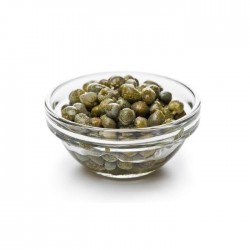
Caper spice (Capparis spinosa)
Pret
1,75 €
(SKU: Z 62)
Seeds Gallery EU,
5/
5
<h2><span style="font-size:14pt;"><strong>Caper spice (Capparis spinosa)</strong></span><br /><span style="font-size:14pt;color:#ff0000;"><strong>The price is for package of 5 grams of this spice.</strong></span></h2>
<p>Capparis spinosa, the caper bush, also called Flinders rose, is a perennial plant that bears rounded, fleshy leaves and large white to pinkish-white flowers.</p>
<p><strong>The plant is best known for the edible flower buds (capers), often used as a seasoning, and the fruit (caper berries), both of which are usually consumed pickled.</strong> Other species of Capparis are also picked along with C. spinosa for their buds or fruits. Other parts of Capparis plants are used in the manufacture of medicines and cosmetics.</p>
<p>Capparis spinosa is found in the wild in the Mediterranean, East Africa, Madagascar, South-Western and Central Asia, the Himalayas, the Pacific Islands, Indomalaya, and Australia.[6] It is present in almost all the circum-Mediterranean countries, and is included in the flora of most of them, but whether it is indigenous to this region is uncertain. Although the flora of the Mediterranean region has considerable endemism, the caper bush could have originated in the tropics, and later been naturalized to the Mediterranean basin.</p>
<p>The taxonomic status of the species is controversial and unsettled. Species within the genus Capparis are highly variable, and interspecific hybrids have been common throughout the evolutionary history of the genus. As a result, some authors have considered C. spinosa to be composed of multiple distinct species, others that the taxon is a single species with multiple varieties or subspecies, or that the taxon C. spinosa is a hybrid between C. orientalis and C. sicula.</p>
<p><strong>Plant</strong></p>
<p>The shrubby plant is many-branched, with alternate leaves, thick and shiny, round to ovate. The flowers are complete, sweetly fragrant, and showy, with four sepals and four white to pinkish-white petals, and many long violet-colored stamens, and a single stigma usually rising well above the stamens.</p>
<p><strong>Culinary uses</strong></p>
<p>The salted and pickled caper bud (called simply a caper) is often used as a seasoning or garnish. Capers are a common ingredient in Mediterranean cuisine, especially Cypriot, Italian, Aeolian and Maltese. The mature fruit of the caper shrub are prepared similarly and marketed as caper berries.</p>
<p>The buds, when ready to pick, are a dark olive green and about the size of a fresh kernel of corn (Zea mays). They are picked, then pickled in salt, or a salt and vinegar solution, and drained. Intense flavor is developed as mustard oil (glucocapparin) is released from each caper bud. This enzymatic reaction leads to the formation of rutin, often seen as crystallized white spots on the surfaces of individual caper buds.</p>
<p>Capers are a distinctive ingredient in Italian cuisine, especially in Sicilian, Aeolian and southern Italian cooking. They are commonly used in salads, pasta salads, meat dishes, and pasta sauces. Examples of uses in Italian cuisine are chicken piccata and spaghetti alla puttanesca.</p>
<p>Capers are known for being one of the ingredients of tartar sauce. They are often served with cold smoked salmon or cured salmon dishes (especially lox and cream cheese). Capers and caper berries are sometimes substituted for olives to garnish a martini.</p>
<p>Capers are categorized and sold by their size, defined as follows, with the smallest sizes being the most desirable: non-pareil (up to 7 mm), surfines (7–8 mm), capucines (8–9 mm), capotes (9–11 mm), fines (11–13 mm), and grusas (14+ mm). If the caper bud is not picked, it flowers and produces a caper berry. The fruit can be pickled and then served as a Greek mezze.</p>
<p>Caper leaves, which are hard to find outside of Greece or Cyprus, are used particularly in salads and fish dishes. They are pickled or boiled and preserved in jars with brine—like caper buds.</p>
<p>Dried caper leaves are also used as a substitute for rennet in the manufacturing of high-quality cheese.</p>
<p><strong>Nutrition</strong></p>
<p>Canned, pickled capers are 84% water, 5% carbohydrates, 2% protein, and 1% fat (table).</p>
<p>Preserved capers are often particularly high in sodium content. In a typical serving of 28 grams (one ounce), capers supply 6 calories and 35% of the Daily Value (DV) for sodium, with no other nutrients in significant content. In a 100 gram amount, the sodium content is 2960 mg or 197% DV, with vitamin K (23% DV), iron (13% DV), and riboflavin (12% DV) also having appreciable levels (table).</p>
<p><strong>Environmental requirements</strong></p>
<p>The caper bush requires a semiarid or arid climate.</p>
<p>The caper bush has developed a series of mechanisms that reduce the impact of high radiation levels, high daily temperature, and insufficient soil water during its growing period.</p>
<p>The caper bush has a curious reaction to sudden increases in humidity; it forms wart-like pock marks across the leaf surface. This is apparently harmless, as the plant quickly adjusts to the new conditions and produces unaffected leaves.</p>
<p>It also shows characteristics of a plant adapted to poor soils. This shrub has a high root/shoot ratio and the presence of mycorrhizae serves to maximize the uptake of minerals in poor soils. Different nitrogen-fixing bacterial strains have been isolated from the caper bush rhizosphere, playing a role in maintaining high reserves of that growth-limiting element.</p>
<p><strong>Cultivation</strong></p>
<p>The caper bush has been introduced as a specialized culture in some European countries in the last four decades. The economic importance of the caper plant led to a significant increase in both the area under cultivation and production levels during the late 1980s. The main production areas are in harsh environments found in Morocco, the southeastern Iberian Peninsula, Turkey, and the Italian islands of Pantelleria and Aeolian Islands, especially Salina. This species has developed special mechanisms to survive in the Mediterranean conditions, and introduction in semiarid lands may help to prevent the disruption of the equilibrium of those fragile ecosystems.</p>
<p>A harvest duration of at least three months is necessary for profitability.</p>
<p>Intense daylight and a long growing period are necessary to secure high yields. The caper bush can withstand temperatures over 40 °C in summer, but it is sensitive to frost during its vegetative period. A caper bush is able to survive low temperatures in the form of stump, as happens in the foothills of the Alps. Caper plants are found even 3,500 m above sea level in Ladakh, though they are usually grown at lower altitudes. Some Italian and Argentine plantings can withstand strong winds without problems, due to caper bush decumbent architecture and the coriaceous consistency of the leaves in some populations.</p>
<p>Scientists can use the known distributions of each species to identify the origin of commercially prepared capers.</p>
<p>The caper bush is a rupicolous species.[20] It is widespread on rocky areas and is grown on different soil associations, including alfisols, regosols, and lithosols. In different Himalayan locations, C. spinosa tolerates both silty clay and sandy, rocky, or gravelly surface soils, with less than 1% organic matter. It grows on bare rocks, crevices, cracks, and sand dunes in Pakistan, in dry calcareous escarpments of the Adriatic region, in dry coastal ecosystems of Egypt, Libya, and Tunisia, in transitional zones between the littoral salt marsh and the coastal deserts of the Asian Red Sea coast, in the rocky arid bottoms of the Jordan valley, in calcareous sandstone cliffs at Ramat Aviv, Israel, and in central west and northwest coastal dunes of Australia. It grows spontaneously in wall joints of antique Roman fortresses, on the Western Wall of Jerusalem's Temple Mount, and on the ramparts of the castle of Santa Bárbara (Alicante, Spain). Clinging caper plants are dominant on the medieval limestone-made ramparts of Alcudia and the bastions of Palma (Majorca, Spain). This aggressive pioneering has brought about serious problems for the protection of monuments.</p>
<p><strong>Propagation</strong></p>
<p>Capers can be grown easily from fresh seeds gathered from ripe fruit and planted into well-drained seed-raising mix. Seedlings appear in two to four weeks. Old, stored seeds enter a state of dormancy and require cold stratification to germinate. The viable embryos germinate within three to four days after partial removal of the lignified seed coats.[21] The seed coats and the mucilage surrounding the seeds may be ecological adaptations to avoid water loss and conserve seed viability during the dry season.</p>
<p>Use of stem cuttings avoids high variability in terms of production and quality. Nevertheless, plants grown from cuttings are more susceptible to drought during the first years after planting. The caper bush is a difficult-to-root woody species, and successful propagation requires careful consideration of biotypes and seasonal and environmental parameters. Rootings up to 55% are possible when using one-year-old wood, depending on cutting harvest time and substrate used. Propagation from stem cuttings is the standard method for growing ‘Mallorquina’ and ‘Italiana’ in Spain, and ‘Nocella’ in the Aolian Islands, esp. Salina. Hardwood cuttings vary in length from 15 to 50 cm and diameter of the cuttings may range from 1.0 to 2.5 cm. Another possibility is to collect stems during February through the beginning of March, treat them with captan or captafol and stratify them outdoors or in a chamber at 3–4 °C, covered with sand or plastic. Moisture content and drainage should be carefully monitored and maintained until planting. Using semihardwood cuttings, collected and planted during August and September, low survival rates (under 30%) have been achieved. Softwood cuttings are prepared in April from 25- to 30-day shoots. Each cutting should contain at least two nodes and be six to 10 cm long. Basal or subterminal cuttings are more successful than terminal ones. Then, cuttings are planted in a greenhouse under a mist system with bottom heat; 150 to 200 cuttings/m2 may be planted.</p>
<p><strong>Orchard establishment</strong></p>
<p>Mean annual temperatures in areas under cultivation are over 14 °C and rainfall varies from 200 mm/year in Spain to 460 mm/year in Pantelleria and 680 mm/year in Salina. In Pantelleria, it rains only 35 mm from May through August, and 84 mm in Salina, the Aeolian Islands. A rainy spring and a hot dry summer are considered advantageous.[22] This drought-tolerant perennial plant is used for landscaping and reducing erosion along highways, steep rocky slopes, sand dunes or fragile semiarid ecosystems.</p>
<p>Caper plantings over 25 to 30 years old are still productive.[23] Thus, physical properties of the soil (texture and depth) are particularly important. Caper bushes can develop extensive root systems and grow best on deep, nonstratified, medium-textured, loamy soils. Mouldboard plowing and harrowing are usual practices prior to caper plant establishment. Soil-profile modification practices, such as deep plowing operating 0.6 to 1 m, can ameliorate some restrictions. In Pantelleria, digging backhoe pits for each shrub was found to be the most effective means of cultivating caper in rocky soils. Two planting designs are used, the square/rectangle and the hedgerow system. Spacing is determined by the vigour of the biotype, fertility of the soil, equipment used and the irrigation method, if any. Bush spacing of 2.5 × 2.5 m or 2.5 × 2 m is common in Pantelleria. In Salina, the Aeolian Islands, 3 × 3 m is satisfactory for ‘Nocella’. In Spain, 4 × 4 m or 5 × 5 m is satisfactory for ‘Mallorquina’. Spacing of 2.0 to 2.5 m is appropriate if C. spinosa is used to control soil erosion on slopes.</p>
<p><strong>Polyphenols</strong></p>
<p>Canned capers contain polyphenols, including the flavonoids quercetin (173 mg per 100 g) and kaempferol (131 mg per 100 g), as well as anthocyanins.</p>
<p><strong>History</strong></p>
<p>The caper was used in ancient Greece as a carminative. It is represented in archaeological levels in the form of carbonised seeds and rarely as flower buds and fruits from archaic and Classical antiquity contexts. Athenaeus in Deipnosophistae pays a lot of attention to the caper, as do Pliny (NH XIX, XLVIII.163) and Theophrastus.</p>
<p>Etymologically, the caper and its relatives in several European tongues can be traced back to Classical Latin capparis, “caper”, in turn borrowed from the Greek κάππαρις, kápparis, whose origin (as that of the plant) is unknown but is probably Asian. Another theory links kápparis to the name of the island of Cyprus (Κύπρος, Kýpros), where capers grow abundantly.</p>
<p>In Biblical times, the caper berry was apparently supposed to have aphrodisiac properties;[29] the Hebrew word aviyyonah (אֲבִיּוֹנָה) for caperberry is closely linked to the Hebrew root אבה (avah), meaning "desire".[30] The word occurs once in the Bible, in the book of Ecclesiastes, at verse 12:5.</p>
<p>The King James Version translates on the basis of the Hebrew root (and perhaps the metaphorical meaning):[31]</p>
<p>...the grasshopper shall be a burden,</p>
<p>and desire shall fail. (12:5 KJV)</p>
<p>The medieval Jewish commentator Rashi also gives a similar gloss (12:5 JPR). However, ancient translations, including the Septuagint, Vulgate, Peshitta and Aquila, render the word more concretely as κάππαρις, "caper berry".[29] Thus in the words of one modern idiomatic translation (2004),</p>
<p>...the grasshopper loses its spring,</p>
<p>and the caper berry has no effect; (12:5 HCSB)</p>
<p>Of other modern versions, the NIV goes for "desire" (12:5 NIV), while the NASB has "caper-berry" (12:5 NASB), as did the 1917 Jewish Publication Society version (12:5 JPS).</p>
<p>The berries (abiyyonot) were eaten, as appears from their liability to tithes and to the restrictions of the 'Orlah. They are carefully distinguished in the Mishnah and the Talmud from the caper leaves, alin, shoots, temarot,[32] and the caper buds, capperisin (note the similarity "caper"isin to "caper");[33] all of which were eaten as seen from the blessing requirement, and declared to be the fruit of the ẓalef or caper plant.</p>
<p>Talmud Bavli, Gemara Berachot, page 36 A&B, discusses the eating of caper sepals versus caper berries, both inside the land of Israel, outside the land of Israel, and in Syria.</p>
Z 62

- Numai online
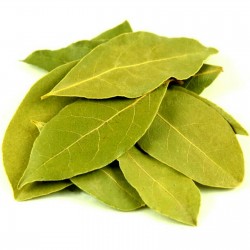
Bay Laurel Tree Leaves from...
Pret
1,10 €
(SKU: Z 65)
Seeds Gallery EU,
5/
5
<!DOCTYPE html>
<html>
<head>
<meta http-equiv="Content-Type" content="text/html; charset=UTF-8" />
</head>
<body>
<h2><strong>Bay Laurel Tree Leaves from Greece - Spice</strong></h2>
<h2><span style="color: #ff0000;"><strong>The price is for a package of 15 leaves.</strong></span></h2>
<p><strong>Here we offer laurel leaf, originally from Greece, privately grown without the use of any chemical preparations. Pure organic product.</strong></p>
<p><strong>The bay leaf you buy in the store can not be measured by the quality or aroma of this local product. Naturally picked from the tree, cleaned and dried.</strong></p>
<p>The bay laurel, with the botanical name Laurus nobilis, of the plant family Lauraceae, is also known as sweet bay, bay tree (esp. United Kingdom), true laurel, Grecian laurel, laurel tree, or simply laurel.</p>
<p>It is an aromatic evergreen tree or large shrub with green, glossy leaves, native to the Mediterranean region. It is one of the plants used for bay leaf seasoning in cooking. Under the simpler name "laurel," Laurus nobilis figures prominently in classical Greek, Roman, and Biblical culture.</p>
<p>Worldwide, many other kinds of plants in diverse families are also called "bay" or "laurel," generally due to similarity of foliage or aroma to Laurus nobilis, and the full name is used for the California bay laurel (Umbellularia), also in the family Lauraceae.</p>
<p><strong>Characteristics</strong></p>
<p>The laurel can vary greatly in size and height, sometimes reaching 10–18 metres (33–59 ft) tall. Laurus is a genus of evergreen trees belonging to the Laurel family, Lauraceae. The genus includes three species, whose diagnostic key characters often overlap (Mabberley 1997).</p>
<p>The laurel is dioecious (unisexual), with male and female flowers on separate plants. Each flower is pale yellow-green, about 1 cm diameter, and they are borne in pairs beside a leaf. The leaves are 6–12 cm long and 2–4 cm broad, with an entire (untoothed) margin. On some leaves, the margin undulates. The fruit is a small, shiny blackberry (a drupe, actually) about 1 cm long.</p>
<p>A recent study found considerable genetic diversity within L. nobilis, and that L. azorica is not genetically or morphologically distinct.</p>
<p><strong>Ecology</strong></p>
<p>Laurus nobilis is a widespread relic of the laurel forests that originally covered much of the Mediterranean Basin when the climate of the region was more humid. With the drying of the Mediterranean during the Pliocene era, the laurel forests gradually retreated, and were replaced by the more drought-tolerant sclerophyll plant communities familiar today. Most of the last remaining laurel forests around the Mediterranean are believed to have disappeared approximately ten thousand years ago, although some remnants still persist in the mountains of southern Turkey, northern Syria, southern Spain, north-central Portugal, northern Morocco, Canary Islands and in Madeira.</p>
<p><strong>Chemical constituents</strong></p>
<p>The most abundant essential oil found in laurel is cineole, also called eucalyptol.[2] The leaves contain about 1.3% essential oils (ol. lauri folii), consisting of 45% eucalyptol, 12% other terpenes, 3–4% sesquiterpenes, 3% methyleugenol, and other α- and β-pinenes, phellandrene, linalool, geraniol, and terpineol.</p>
<p>Both essential and fatty oils are present in the fruit. The fruit is pressed and water-extracted to obtain these products. The fruit contains up to 30% fatty oils and about 1% essential oils (terpenes, sesquiterpenes, alcohols, and ketones).</p>
<p><strong>Food</strong></p>
<p>The plant is the source of several popular herbs and one spice used in a wide variety of recipes, particularly among Mediterranean cuisines.[2] Most commonly, the aromatic leaves are added whole to Italian pasta sauces. However, even when cooked, whole bay leaves can be sharp and abrasive enough to damage internal organs, so they are typically removed from dishes before serving, unless used as a simple garnish.[4] Whole bay leaves have a long shelf life of about one year, under normal temperature and humidity.[4] Bay leaves are used almost exclusively as flavor agents during the food preparation stage;</p>
<p>Ground bay leaves, however, can be ingested safely and are often used in soups and stocks, as well as being a common addition to a Bloody Mary.[4] Dried laurel berries and pressed leaf oil can both be used as robust spices, and even the wood can be burnt for strong smoke flavoring.</p>
<p><strong>Traditional medicine</strong></p>
<p>Aqueous extracts of bay laurel can also be used as astringents and even as a reasonable salve for open wounds.</p>
<p>In massage therapy, the essential oil of bay laurel is reputed to alleviate arthritis and rheumatism, while in aromatherapy, it is used to treat earaches and high blood pressure.[6][unreliable source?] A traditional folk remedy for rashes caused by poison ivy, poison oak, and stinging nettle is a poultice soaked in boiled bay leaves.</p>
<p>The chemical compound lauroside B isolated from Laurus nobilis is an inhibitor of human melanoma (skin cancer) cell proliferation at high concentrations.</p>
<p>Other uses</p>
<p>Bay is widely cultivated as an ornamental plant in regions with Mediterranean or oceanic climates, and as a house plant or greenhouse plant in colder regions. It is used in topiary to create single erect stems with ball-shaped, box-shaped or twisted crowns; also for low hedges. Together with a gold form, L. nobilis 'Aurea',[9] it has gained the Royal Horticultural Society's Award of Garden Merit.[10]</p>
<p>Laurel oil is a main ingredient, and the distinguishing characteristic of Aleppo soap.</p>
<p><strong>Symbolism</strong></p>
<p>Bay laurel was used to fashion the laurel wreath of ancient Greece, a symbol of highest status. A wreath of bay laurels was given as the prize at the Pythian Games because the games were in honor of Apollo, and the laurel was one of his symbols.</p>
<p>Ovid tells the story in the Metamorphoses that laurel tree was first formed when the nymph Daphne was changed into a laurel tree because of Apollo's pursuit of her. Daphne is the Greek name for the tree.</p>
<p>The symbolism carried over to Roman culture, which held the laurel as a symbol of victory.[12] It is also the source of the words baccalaureate and poet laureate, as well as the expressions "assume the laurel" and "resting on one's laurels".</p>
<p>In the Bible, the laurel is often an emblem of prosperity and fame. In Christian tradition, it symbolizes the resurrection of Christ.</p>
<p>In Chinese folklore, there is a great laurel tree on the moon, and the Chinese name for the laurel, (Chinese: 月桂), literally translates to "moon-laurel". This is the subject of a story of Wu Gang, a man who aspired to immortality and neglected his work. When the deities discovered this, they sentenced Wu Gang to fell the laurel tree, whereupon he could join the ranks of the deities; however, since the laurel regenerated immediately when cut, it could never be felled. The phrase (Chinese: 吴刚伐木) ("Wu Gang chops the tree") is sometimes used to refer to endless toil, analogous to the legend of Sisyphus in Greek mythology.</p>
</body>
</html>
Z 65


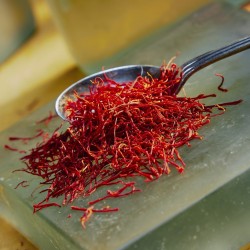
Saffron spice (Saffron crocus)
Pret
2,85 €
(SKU: Z 66)
Seeds Gallery EU,
5/
5
<h2><span style="font-size:14pt;"><strong>Saffron spice (Saffron crocus)</strong></span><br /><span style="font-size:14pt;color:#ff0000;"><strong>The price is for package of 1 gram of this spice.</strong></span></h2>
<p><span>Crocus sativus, commonly known as saffron crocus, or autumn crocus,[2] is a species of flowering plant of the Crocus genus in the Iridaceae family. It is best known for producing the spice saffron from the filaments that grow inside the flower. The term "autumn crocus" is also mistakenly used for flowers in the Colchicum species. However, crocuses have 3 stamens and 1 style, while colchicum have 6 stamens and 3 styles and are toxic.</span></p>
<p><span>This cormous autumn-flowering perennial plant species is unknown in the wild.[2] Human cultivation of saffron crocus and use of saffron have taken place for more than 3,500 years and spans different cultures, continents, and civilizations, see history of saffron. Crocus sativus is currently known to grow in the Mediterranean, East Asia, and Irano-Turanian Region.[4] Saffron may be the triploid form of a species found in Eastern Greece, Crocus cartwrightianus; it probably appeared first in Crete. An origin in Western or Central Asia, although often suspected, is not supported by botanical research.[5] Other sources suggest some genetic input from Crocus pallasii.</span></p>
<p><strong><span>Morphology</span></strong></p>
<p><span>Crocus sativus has a corm, which holds leaves, bracts, bracteole, and the flowering stalk.[4] These are protected by the corm underground. C. sativus generally blooms with purple flowers in the autumn. The plant grows about 10 to 30 cm high.[7] C. sativus is a triploid with 24 chromosomes, which means it has three times the haploid number of chromosomes. This makes the plant sterile due to its inability to pair chromosomes during meiosis.</span></p>
<p><strong><span>Cultivation</span></strong></p>
<p><span>Crocus sativus is unknown in the wild, and its ancestor is unknown. The species Crocus cartwrightianus is the most probable ancestor,[9][6] but C. thomassi and C. pallasii are still being considered as potential predecessors.[10] Manual vegetative multiplication is necessary to produce offspring for this species as the plant itself is a triploid that is self-incompatible and male sterile, therefore rendering it incapable of sexual reproduction. This inability to reproduce on its own supports the hypothesis that C. sativus is a mutant descending from C. carthwrightianus as a result of selective breeding.</span></p>
<p><span>Corms of Crocus sativus should be planted 4 inches apart and in a trough 4 inches deep. The flower grows best in areas of full sun in well-drained soil with moderate levels of organic content.[11] The corms will multiply after each year, and will last 3–5 years.</span></p>
<p><strong><span>Use</span></strong></p>
<p><span>Saffron is considered to be the most valuable spice by weight. <strong>See spice</strong>. Depending on the size of harvested stigmas, 50,000–75,000 Crocus sativus plants are needed to produce about 1 pound of saffron;[13] each flower only produces three stigmas. Stigmas should be harvested mid-morning when the flowers are fully opened.[12] The saffron crocus (Crocus sativus) should not be confused with "meadow" saffron or autumn crocus (Colchicum autumnale) which is poisonous.</span></p>
<p><strong><span>Spice</span></strong></p>
<p><span>Saffron (pronounced /ˈsæfrən/ or /ˈsæfrɒn/)[1] is a spice derived from the flower of Crocus sativus, commonly known as the "saffron crocus". The vivid crimson stigmas and styles, called threads, are collected and dried to be used mainly as a seasoning and colouring agent in food. Saffron, long among the world's most costly spices by weight,[2][3][4] was probably first cultivated in or near Greece.[5] C. sativus is probably a form of C. cartwrightianus, that emerged by human cultivators selectively breeding plants for unusually long stigmas in late Bronze Age Crete.[6] It slowly propagated throughout much of Eurasia and was later brought to parts of North Africa, North America, and Oceania.</span></p>
<p><span>Saffron's taste and iodoform or hay-like fragrance result from the chemicals picrocrocin and safranal.[7][8] It also contains a carotenoid pigment, crocin, which imparts a rich golden-yellow hue to dishes and textiles. Its recorded history is attested in a 7th-century BC Assyrian botanical treatise compiled under Ashurbanipal,[9] and it has been traded and used for over four millennia. Iran now accounts for approximately 90% of the world production of saffron.</span></p>
<p><span>The domesticated saffron crocus, Crocus sativus, is an autumn-flowering perennial plant unknown in the wild. It probably descends from the eastern Mediterranean autumn-flowering Crocus cartwrightianus,[12][13] which is also known as "wild saffron"[14] and originated in Crete[15] or mainland Greece.[8] An origin in Southwest Asia,[3][16] although often suspected, has been disapproved by botanical research.[17] The saffron crocus probably resulted when C. cartwrightianus was subjected to extensive artificial selection by growers seeking longer stigmas. C. thomasii and C. pallasii are other possible sources.[13][18] As a genetically monomorphic clone,[15] it slowly propagated throughout much of Eurasia.</span></p>
<p><span>It is a sterile triploid form, which means that three homologous sets of chromosomes compose each specimen's genetic complement; C. sativus bears eight chromosomal bodies per set, making for 24 in total.[19] Being sterile, the purple flowers of C. sativus fail to produce viable seeds; reproduction hinges on human assistance: clusters of corms, underground, bulb-like, starch-storing organs, must be dug up, divided, and replanted. A corm survives for one season, producing via this vegetative division up to ten "cormlets" that can grow into new plants in the next season.[12] The compact corms are small, brown globules that can measure as large as 5 cm (2 in) in diameter, have a flat base, and are shrouded in a dense mat of parallel fibres; this coat is referred to as the "corm tunic". Corms also bear vertical fibres, thin and net-like, that grow up to 5 cm (2 in) above the plant's neck.[19]</span></p>
<p><span>The plant sprouts 5–11 white and non-photosynthetic leaves known as cataphylls. These membrane-like structures cover and protect the crocus's 5 to 11 true leaves as they bud and develop. The latter are thin, straight, and blade-like green foliage leaves, which are 1–3 mm (0.04–0.12 in), in diameter, which either expand after the flowers have opened ("hysteranthous") or do so simultaneously with their blooming ("synanthous"). C. sativus cataphylls are suspected by some to manifest prior to blooming when the plant is irrigated relatively early in the growing season. Its floral axes, or flower-bearing structures, bear bracteoles, or specialised leaves, that sprout from the flower stems; the latter are known as pedicels.[19] After aestivating in spring, the plant sends up its true leaves, each up to 40 cm (16 in) in length. Only in October, after most other flowering plants have released their seeds, do its brilliantly hued flowers develop; they range from a light pastel shade of lilac to a darker and more striated mauve.[20] The flowers possess a sweet, honey-like fragrance. Upon flowering, the plants are 20–30 cm (8–12 in) in height and bear up to four flowers. A three-pronged style 25–30 mm (1.0–1.2 in) in length, emerges from each flower. Each prong terminates with a vivid crimson stigma, which are the distal end of a carpel.</span></p>
<p><strong><span>Cultivation</span></strong></p>
<p><span>The saffron crocus, unknown in the wild, probably descends from Crocus cartwrightianus. It is a triploid that is "self-incompatible" and male sterile; it undergoes aberrant meiosis and is hence incapable of independent sexual reproduction—all propagation is by vegetative multiplication via manual "divide-and-set" of a starter clone or by interspecific hybridisation.</span></p>
<p><span>Crocus sativus thrives in the Mediterranean maquis, an ecotype superficially resembling the North American chaparral, and similar climates where hot and dry summer breezes sweep semi-arid lands. It can nonetheless survive cold winters, tolerating frosts as low as −10 °C (14 °F) and short periods of snow cover.[12][22] Irrigation is required if grown outside of moist environments such as Kashmir, where annual rainfall averages 1,000–1,500 mm (39–59 in); saffron-growing regions in Greece (500 mm or 20 in annually) and Spain (400 mm or 16 in) are far drier than the main cultivating Iranian regions. What makes this possible is the timing of the local wet seasons; generous spring rains and drier summers are optimal. Rain immediately preceding flowering boosts saffron yields; rainy or cold weather during flowering promotes disease and reduces yields. Persistently damp and hot conditions harm the crops,[23] and rabbits, rats, and birds cause damage by digging up corms. Nematodes, leaf rusts, and corm rot pose other threats. Yet Bacillus subtilis inoculation may provide some benefit to growers by speeding corm growth and increasing stigma biomass yield.</span></p>
<p><span>The plants fare poorly in shady conditions; they grow best in full sunlight. Fields that slope towards the sunlight are optimal (i.e., south-sloping in the Northern Hemisphere). Planting is mostly done in June in the Northern Hemisphere, where corms are lodged 7–15 cm (3–6 in) deep; its roots, stems, and leaves can develop between October and February.[19] Planting depth and corm spacing, in concert with climate, are critical factors in determining yields. Mother corms planted deeper yield higher-quality saffron, though form fewer flower buds and daughter corms. Italian growers optimise thread yield by planting 15 cm (6 in) deep and in rows 2–3 cm (0.8–1.2 in) apart; depths of 8–10 cm (3–4 in) optimise flower and corm production. Greek, Moroccan, and Spanish growers employ distinct depths and spacings that suit their locales.</span></p>
<p><span>C. sativus prefers friable, loose, low-density, well-watered, and well-drained clay-calcareous soils with high organic content. Traditional raised beds promote good drainage. Soil organic content was historically boosted via application of some 20–30 tonnes (20–30 long tons; 22–33 short tons) of manure per hectare. Afterwards, and with no further manure application, corms were planted.[25] After a period of dormancy through the summer, the corms send up their narrow leaves and begin to bud in early autumn. Only in mid-autumn do they flower. Harvests are by necessity a speedy affair: after blossoming at dawn, flowers quickly wilt as the day passes.[26] All plants bloom within a window of one or two weeks.[27] Stigmas are dried quickly upon extraction and (preferably) sealed in airtight containers.</span></p>
<p><span>One freshly picked flower yields an average 30 mg (0.0011 oz) of fresh saffron or 7 mg (0.00025 oz) dried; roughly 150 flowers yield 1 g (0.035 oz) of dry saffron threads; to produce 12 g (0.42 oz) of dried saffron, 1 kg (2.2 lb) of flowers are needed; 1 lb (0.45 kg) yields 0.2 oz (5.7 g) of dried saffron.[25] To glean 1 lb (450 g) of dry saffron requires the harvest of 50,000–75,000 flowers; a kilogram requires 110,000–170,000 flowers.[29][30] Forty hours of labour are needed to pick 150,000 flowers.</span></p>
<p><strong><span>Chemistry</span></strong></p>
<p><span>Saffron contains more than 150 volatile and aroma-yielding compounds. It also has many nonvolatile active components,[33] many of which are carotenoids, including zeaxanthin, lycopene, and various α- and β-carotenes. However, saffron's golden yellow-orange colour is primarily the result of α-crocin. This crocin is trans-crocetin di-(β-D-gentiobiosyl) ester; it bears the systematic (IUPAC) name 8,8-diapo-8,8-carotenoic acid. This means that the crocin underlying saffron's aroma is a digentiobiose ester of the carotenoid crocetin.[33] Crocins themselves are a series of hydrophilic carotenoids that are either monoglycosyl or diglycosyl polyene esters of crocetin.[33] Crocetin is a conjugated polyene dicarboxylic acid that is hydrophobic, and thus oil-soluble. When crocetin is esterified with two water-soluble gentiobioses, which are sugars, a product results that is itself water-soluble. The resultant α-crocin is a carotenoid pigment that may comprise more than 10% of dry saffron's mass. The two esterified gentiobioses make α-crocin ideal for colouring water-based and non-fatty foods such as rice dishes.[5]</span></p>
<p><span>The bitter glucoside picrocrocin is responsible for saffron's flavour. Picrocrocin (chemical formula: C</span></p>
<p><span>16H</span></p>
<p><span>26O</span></p>
<p><span>7; systematic name: 4-(β-D-glucopyranosyloxy)-2,6,6-trimethylcyclohex-1-ene-1-carboxaldehyde) is a union of an aldehyde sub-molecule known as safranal (systematic name: 2,6,6-trimethylcyclohexa-1,3-diene-1-carboxaldehyde) and a carbohydrate. It has insecticidal and pesticidal properties, and may comprise up to 4% of dry saffron. Picrocrocin is a truncated version of the carotenoid zeaxanthin that is produced via oxidative cleavage, and is the glycoside of the terpene aldehyde safranal.</span></p>
<p><span>When saffron is dried after its harvest, the heat, combined with enzymatic action, splits picrocrocin to yield D–glucose and a free safranal molecule.[32] Safranal, a volatile oil, gives saffron much of its distinctive aroma.[7][35] Safranal is less bitter than picrocrocin and may comprise up to 70% of dry saffron's volatile fraction in some samples.[34] A second molecule underlying saffron's aroma is 2-hydroxy-4,4,6-trimethyl-2,5-cyclohexadien-1-one, which produces a scent described as saffron, dried hay-like.[36] Chemists find this is the most powerful contributor to saffron's fragrance, despite its presence in a lesser quantity than safranal.[36] Dry saffron is highly sensitive to fluctuating pH levels, and rapidly breaks down chemically in the presence of light and oxidising agents. It must, therefore, be stored away in air-tight containers to minimise contact with atmospheric oxygen. Saffron is somewhat more resistant to heat.</span></p>
<p><strong><span>Grades and ISO 3632 categories</span></strong></p>
<p><span>Saffron is not all of the same quality and strength. Strength is related to several factors including the amount of style picked along with the red stigma. Age of the saffron is also a factor. More style included means the saffron is less strong gram for gram, because the colour and flavour are concentrated in the red stigmas. Saffron from Iran, Spain and Kashmir is classified into various grades according to the relative amounts of red stigma and yellow styles it contains. Grades of Iranian saffron are: "sargol" (red stigma tips only, strongest grade), "pushal" or "pushali" (red stigmas plus some yellow style, lower strength), "bunch" saffron (red stigmas plus large amount of yellow style, presented in a tiny bundle like a miniature wheatsheaf) and "konge" (yellow style only, claimed to have aroma but with very little, if any, colouring potential). Grades of Spanish saffron are "coupé" (the strongest grade, like Iranian sargol), "mancha" (like Iranian pushal), and in order of further decreasing strength "rio", "standard" and "sierra" saffron. The word "mancha" in the Spanish classification can have two meanings: a general grade of saffron or a very high quality Spanish-grown saffron from a specific geographical origin. Real Spanish-grown La Mancha saffron has PDO protected status and this is displayed on the product packaging. Spanish growers fought hard for Protected Status because they felt that imports of Iranian saffron re-packaged in Spain and sold as "Spanish Mancha saffron" were undermining the genuine La Mancha brand. Similar was the case in Kashmir where Imported Iranian saffron is mixed with local saffron and sold as ‘Kashmir brand’ at a higher price[37]. In Kashmir, saffron is mostly classified into two main categories called 'Mongra' (stigma alone) or 'Laccha' (stigmas attached with parts of the style)[38]. Countries producing less saffron do not have specialised words for different grades and may only produce one grade. Artisan producers in Europe and New Zealand have offset their higher labour charges for saffron harvesting by targeting quality, only offering extremely high grade saffron.</span></p>
<p><span>In addition to descriptions based on how the saffron is picked, saffron may be categorised under the international standard ISO 3632 after laboratory measurement of crocin (responsible for saffron's colour), picrocrocin (taste), and safranal (fragrance or aroma) content.[39] However, often there is no clear grading information on the product packaging and little of the saffron readily available in UK is labelled with ISO category. This lack of information makes it hard for customers to make informed choices when comparing prices and buying saffron.</span></p>
<p><span>Under ISO 3632, determination of non-stigma content ("floral waste content") and other extraneous matter such as inorganic material ("ash") are also key. Grading standards are set by the International Organization for Standardization, a federation of national standards bodies. ISO 3632 deals exclusively with saffron and establishes three categories: III (poorest quality), II, and I (finest quality). Formerly there was also category IV, which was below category III. Samples are assigned categories by gauging the spice's crocin and picrocrocin content, revealed by measurements of specific spectrophotometric absorbance. Safranal is treated slightly differently and rather than there being threshold levels for each category, samples must give a reading of 20–50 for all categories.</span></p>
<p><span>These data are measured through spectrophotometry reports at certified testing laboratories worldwide. Higher absorbances imply greater levels of crocin, picrocrocin and safranal, and thus a greater colouring potential and therefore strength per gram. The absorbance reading of crocin is known as the "colouring strength" of that saffron. Saffron's colouring strength can range from lower than 80 (for all category IV saffron) up to 200 or greater (for category I). The world's finest samples (the selected, most red-maroon, tips of stigmas picked from the finest flowers) receive colouring strengths in excess of 250, making such saffron over three times more powerful than category IV saffron. Market prices for saffron types follow directly from these ISO categories. Sargol and coupé saffron would typically fall into ISO 3632 category I. Pushal and mancha would probably be assigned to category II. On many saffron packaging labels, neither the ISO 3632 category nor the colouring strength (the measurement of crocin content) is displayed.</span></p>
<p><span>However, many growers, traders, and consumers reject such lab test numbers. Some people prefer a more holistic method of sampling batches of threads for taste, aroma, pliability, and other traits in a fashion similar to that practised by experienced wine tasters.[40] However, ISO 3632 grade and colouring strength information allow consumers to make instant comparisons between the quality of different saffron brands, without needing to purchase and sample the saffron. In particular, consumers can work out value for money based on price per unit of colouring strength rather than price per gram, given the wide possible range of colouring strengths that different kinds of saffron can have.</span></p>
<p><strong><span>Adulteration</span></strong></p>
<p><span>Despite attempts at quality control and standardisation, an extensive history of saffron adulteration, particularly among the cheapest grades, continues into modern times. Adulteration was first documented in Europe's Middle Ages, when those found selling adulterated saffron were executed under the Safranschou code.[41] Typical methods include mixing in extraneous substances like beetroot, pomegranate fibres, red-dyed silk fibres, or the saffron crocus's tasteless and odourless yellow stamens. Other methods included dousing saffron fibres with viscid substances like honey or vegetable oil to increase their weight. Powdered saffron is more prone to adulteration, with turmeric, paprika, and other powders used as diluting fillers. Adulteration can also consist of selling mislabelled mixes of different saffron grades. Thus, in India, high-grade Kashmiri saffron is often sold and mixed with cheaper Iranian imports; these mixes are then marketed as pure Kashmiri saffron, a development that has cost Kashmiri growers much of their income.[42][43] Safflower is a common substitute sometimes sold as saffron. The spice is reportedly counterfeited with horse hair, corn silk, or shredded paper. Tartrazine or sunset yellow have been used to colour counterfeit powdered saffron.</span></p>
<p><strong><span>Types</span></strong></p>
<p><span>The various saffron crocus cultivars give rise to thread types that are often regionally distributed and characteristically distinct. Varieties (not varieties in the botanical sense) from Spain, including the tradenames "Spanish Superior" and "Creme", are generally mellower in colour, flavour, and aroma; they are graded by government-imposed standards. Italian varieties are slightly more potent than Spanish. The most intense varieties tend to be Iranian. Various "boutique" crops are available from New Zealand, France, Switzerland, England, the United States, and other countries—some of them organically grown. In the US, Pennsylvania Dutch saffron—known for its "earthy" notes—is marketed in small quantities.</span></p>
<p><span>Consumers may regard certain cultivars as "premium" quality. The "Aquila" saffron, or zafferano dell'Aquila, is defined by high safranal and crocin content, distinctive thread shape, unusually pungent aroma, and intense colour; it is grown exclusively on eight hectares in the Navelli Valley of Italy's Abruzzo region, near L'Aquila. It was first introduced to Italy by a Dominican monk from Inquisition-era Spain[when?]. But the biggest saffron cultivation in Italy is in San Gavino Monreale, Sardinia, where it is grown on 40 hectares, representing 60% of Italian production; it too has unusually high crocin, picrocrocin, and safranal content. Another is the "Mongra" or "Lacha" saffron of Kashmir (Crocus sativus 'Cashmirianus'), which is among the most difficult for consumers to obtain. Repeated droughts, blights, and crop failures in Kashmir combine with an Indian export ban, contribute to its prohibitive overseas prices. Kashmiri saffron is recognisable by its dark maroon-purple hue; it is among the world's darkest, which hints at strong flavour, aroma, and colouring effect.</span></p>
<p><strong><span>Trade</span></strong></p>
<p><span>Almost all saffron grows in a belt from Spain in the west to India in the east. The other continents, except Antarctica, produce smaller amounts. In 2014, 250 t (250,000 kg) were produced worldwide.[47] Iran is responsible for around 90–93% of global production, and much of their produce is exported.[10] A few of Iran's drier eastern and southeastern provinces, including Fars, Kerman, and those in the Khorasan region, glean the bulk of modern global production. In 2005, the second-ranked Greece produced 5.7 t (5,700 kg), while Morocco (the Berber region of Taliouine), and India (Kashmir), tied for third rank, each producing 2.3 t (2,300 kg).</span></p>
<p><span>In recent years, Afghan cultivation has risen. Azerbaijan, Morocco, and Italy are, in decreasing order, lesser producers. Prohibitively high labour costs and abundant Iranian imports mean that only select locales continue the tedious harvest in Austria, Germany, and Switzerland—among them the Swiss village of Mund, whose annual output is a few kilograms.[8] Microscale production of saffron can be found in Australia (mainly the state of Tasmania),[48] China, Egypt, parts of England[49] France, Israel, Mexico, New Zealand, Sweden (Gotland), Turkey (mainly around the town of Safranbolu), the United States (California and Pennsylvania), and Central Africa.</span></p>
<p><span>Saffron prices at wholesale and retail rates range from US$500 to US$5,000 per pound, or US$1,100–11,000/kg. In Western countries, the average retail price in 1974 was $1,000 per pound, or US$2,200 per kilogram.[3] In February 2013, a retail bottle containing 0.06 ounces could be purchased for $16.26 or the equivalent of $4,336 per pound or as little as about $2,000/pound in larger quantities. A pound contains between 70,000 and 200,000 threads. Vivid crimson colouring, slight moistness, elasticity, and lack of broken-off thread debris are all traits of fresh saffron.</span></p>
<p><strong><span>Uses</span></strong></p>
<p><span>Saffron's aroma is often described by connoisseurs as reminiscent of metallic honey with grassy or hay-like notes, while its taste has also been noted as hay-like and sweet. Saffron also contributes a luminous yellow-orange colouring to foods. Saffron is widely used in Persian,[50] Indian, European, and Arab cuisines. Confectioneries and liquors also often include saffron. Saffron is used in dishes ranging from the jewelled rice and khoresh of Iran, [51][52] the Milanese risotto of Italy, the paella of Spain, the bouillabaisse of France, to the biryani with various meat accompaniments in South Asia. One of the most esteemed use for saffron is in the preparation of the Golden Ham, a precious dry-cured ham made with saffron from San Gimignano. Common saffron substitutes include safflower (Carthamus tinctorius, which is often sold as "Portuguese saffron" or "açafrão"), annatto, and turmeric (Curcuma longa).</span></p>
<p><span>Saffron has a long history of use in traditional medicine.[53][54] Saffron has also been used as a fabric dye, particularly in China and India, and in perfumery.[55] It is used for religious purposes in India.</span></p>
<p><strong><span>Nutrition</span></strong></p>
<p><span>Dried saffron is composed of 12% water, 65% carbohydrates, 6% fat and 11% protein (table).</span></p>
<p><span>In comparison to other spices or dried foods, the nutrient content of dried saffron shows richness of nutritional value across B vitamins and dietary minerals (table). In a serving of one tablespoon (2 grams), manganese is present as 28% of the Daily Value while other nutrients are negligible (table).</span></p>
<p><strong><span>Research</span></strong></p>
<p><span>One limited meta-analysis concluded that saffron supplementation improved symptoms in patients with major depressive disorders[56] and a review indicated that it helped with mild to moderate depression.</span></p>
<p><strong><span>History</span></strong></p>
<p><span>The documented history of saffron cultivation spans more than three millennia.[12] The wild precursor of domesticated saffron crocus is probably Crocus cartwrightianus. If C. sativus is a mutant form of C. cartwrightianus, then it may have emerged by human cultivators selectively breeding specimens for unusually long stigmas in late Bronze Age Crete.[6] It slowly propagated throughout much of Eurasia and was later brought to parts of North Africa, North America, and Oceania.</span></p>
<p><strong><span>Eastern</span></strong></p>
<p><span>Saffron was detailed in a 7th-century BC Assyrian botanical reference compiled under Ashurbanipal.[9] Documentation of saffron's use over the span of 3,500 years has been uncovered.[58] Saffron-based pigments have indeed been found in 50,000-year-old depictions of prehistoric places in northwest Iran.[59][60] The Sumerians later used wild-growing saffron in their remedies and magical potions.[61] Saffron was an article of long-distance trade before the Minoan palace culture's 2nd millennium BC peak. Ancient Persians cultivated Persian saffron (Crocus sativus 'Hausknechtii') in Derbena, Isfahan, and Khorasan by the 10th century BC. At such sites, saffron threads were woven into textiles,[59] ritually offered to divinities, and used in dyes, perfumes, medicines, and body washes.[62] Saffron threads would thus be scattered across beds and mixed into hot teas as a curative for bouts of melancholy. Non-Persians also feared the Persians' usage of saffron as a drugging agent and aphrodisiac.[63] During his Asian campaigns, Alexander the Great used Persian saffron in his infusions, rice, and baths as a curative for battle wounds. Alexander's troops imitated the practice from the Persians and brought saffron-bathing to Greece.[64]</span></p>
<p><span>Conflicting theories explain saffron's arrival in South Asia. Kashmiri and Chinese accounts date its arrival anywhere between 2500–900 years ago.[65][66][67] Historians studying ancient Persian records date the arrival to sometime prior to 500 BC,[5] attributing it to a Persian transplantation of saffron corms to stock new gardens and parks.[68] Phoenicians then marketed Kashmiri saffron as a dye and a treatment for melancholy. Its use in foods and dyes subsequently spread throughout South Asia. Buddhist monks wear saffron-coloured robes; however, the robes are not dyed with costly saffron but turmeric, a less expensive dye, or jackfruit.[69] Monks' robes are dyed the same colour to show equality with each other, and turmeric or ochre were the cheapest, most readily available dyes. Gamboge is now used to dye the robes.</span></p>
<p><span>Some historians believe that saffron came to China with Mongol invaders from Persia.[71] Yet saffron is mentioned in ancient Chinese medical texts, including the forty-volume pharmacopoeia titled Shennong Bencaojing (神農本草經: "Shennong's Great Herbal", also known as Pen Ts'ao or Pun Tsao), a tome dating from 300–200 BC. Traditionally credited to the fabled Yan ("Fire") Emperor (炎帝) Shennong, it discusses 252 phytochemical-based medical treatments for various disorders.[72] Nevertheless, around the 3rd century AD, the Chinese were referring to saffron as having a Kashmiri provenance. According to Chinese herbalist Wan Zhen, "[t]he habitat of saffron is in Kashmir, where people grow it principally to offer it to the Buddha." Wan also reflected on how it was used in his time: "The flower withers after a few days, and then the saffron is obtained. It is valued for its uniform yellow colour. It can be used to aromatise wine."</span></p>
Z 66

- Numai online




